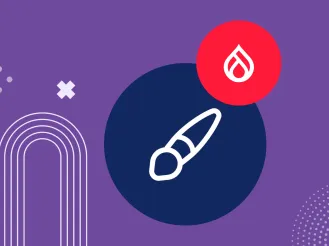Quick Wins for Maximum Impact: Practical Ways to Improve Your Higher Ed Website
It’s easy for higher ed marketing teams to succumb to the “tyranny of the urgent.” Your small team is responsible for supporting the marketing needs of every area across campus, often with very little lead time. And since there is a never-ending stream of requests to fulfill, it can be challenging to carve out the necessary time and energy to devote to big-picture projects.
But in today’s digital-first world, improving your website isn’t just an urgent task. It’s mission-critical. You can’t afford to let this high-level project languish on your team’s to-do list.
The good news is that you don’t have to fix everything right away. To jumpstart your efforts, it’s helpful to break down this seemingly Herculean project into clear, actionable steps. Devoting a few hours per week to knocking out the following high-impact tasks will result in meaningful progress.
Identify the Cyclical Goals Your Website Should Support
Your website exists for multiple reasons. It’s the hub of your prospective students’ search, the primary vehicle for you to tell your institution’s story, and the platform for alumni to provide ongoing philanthropic support. It explains your academic programs, shines the spotlight on faculty research, touts your upcoming special events, and so much more.
But which of these objectives is most important? More to the point, what are the specific goals your institution is trying to achieve in the coming weeks and months? And which areas of your website could you focus on to help reach those immediate goals?
Hold Stakeholder Workshops to Prioritize Goals
To achieve quick wins, consider prioritizing your goals cyclically. But don’t try to establish these goals alone. Hold stakeholder workshops to explore questions like:
- What are the top 3 things we are trying to accomplish in the next 3 months?
- What are our Admissions goals? Are we trying to increase applications? Move more accepted students through the decision funnel? Narrow our applicant pool to identify more right-fit students?
- Do our Admissions goals supersede everything else? Or are there other areas that require focused attention in the immediate future?
- Should we ramp up our outreach to current students? Which student success metrics might the website support (e.g., first-year retention rate, graduation rate)? How can we infuse our website with more student-focused content?
- What other high-impact goals are we trying to achieve? Are we closing in on a fundraising goal or launching a large-scale campaign? What are the other strategic initiatives that should command our attention?
- If we only make one improvement to the website in the next month, what should it be?

Reach Alignment on Next Steps
The goal of your stakeholder workshops is to identify specific, actionable steps you can take to support your highest priority goals. Keep in mind that there may come a time when you decide to rebuild or redesign your entire website. At that time, you’ll need to look at the site holistically with this same group of stakeholders.
But until then, use the shared goals you identify in your stakeholder workshops as the basis for your immediate improvement efforts.
Gather Quantitative and Qualitative Data
Analyzing your data can be an overwhelming undertaking. That’s especially true for higher ed institutions with hundreds — or even thousands — of pages. That’s why it’s necessary to get clear on your goals before you dig into your data. Your specific objectives become the compass that helps you navigate through this complicated terrain.
We recommend that you gather both quantitative and qualitative data about the sections of your site that pertain to the goals at hand.
Quantitative Data
Quantitative data tells you what is happening with your site. There are a number of easy-to-use tools to help you get started, but we recommend
- Google Analytics. Take a look at which pages are viewed the most, where site visitors spend the most time and the user journeys that lead to the outcomes you’re looking for. Along the way, take time to simplify your content by deciding whether to keep the page as is, rewrite it to be more engaging, or remove it altogether. (If no one has ever visited a particular page — no matter how important one of your stakeholders thinks it is — it’s time to get rid of it!)
- Hotjar Heatmaps. This free tool provides at-a-glance insight into which parts of each page your visitors are looking at and engaging with. You can easily see which areas they scroll right past — and which elements grab their attention.
It can be helpful to engage a third-party vendor to work with you to put analytical tools in place, establish your benchmarks, and glean pertinent insight. After that legwork is done, it’s simply a matter of looking at the data at regular intervals to track your progress.
Qualitative Data
Qualitative data via user testing provides insight into the why of the quantitative data you’ve gathered.
We’ve found it particularly helpful to engage current students (especially marketing majors) in this process. Ask them to:
- Perform specific tasks (e.g. filling out a form, registering for an event) and describe any roadblocks they encounter along the way.
- Review key pages and suggest ways to make content more accessible and inclusive.
- Identify long walls of text that can be broken down into skimmable, scannable bullet points or shorter paragraphs.
- Find areas where the site isn’t functioning as intended (e.g. broken links, missing calls to action, etc).
Since students are also part of your target audience, they have valuable insights to share. As an added benefit, the experience can be a valuable learning opportunity for them. You might even consider turning it into a paid internship.
Use what you learn from both types of data to help you dial into the areas of improvement that will yield the best results.

Level Up Your Website’s Effectiveness in As Few as 2 Hours Per Week
Now it’s time to take what you’ve learned and start making meaningful progress. Create a list of quick wins and start tackling them one by one. Remember: It’s ok if you can’t fix everything that’s wrong with your higher ed website right away. But don’t let the enormity of the task stop you from starting somewhere.
Define your goals. Identify small, achievable steps that you can complete in as few as two hours per week. Collect data to point you in the right direction. And look for smart ways to maximize the impact of the time you’re able to devote to website improvements.
Of course, there’s no need for you to go it alone. We’ve helped many higher education institutions make their website the robust marketing tool it can be. We’d love to help you too. Just reach out



